Saturday Dec 06, 2025
Saturday Dec 06, 2025
Wednesday, 8 May 2019 00:00 - - {{hitsCtrl.values.hits}}
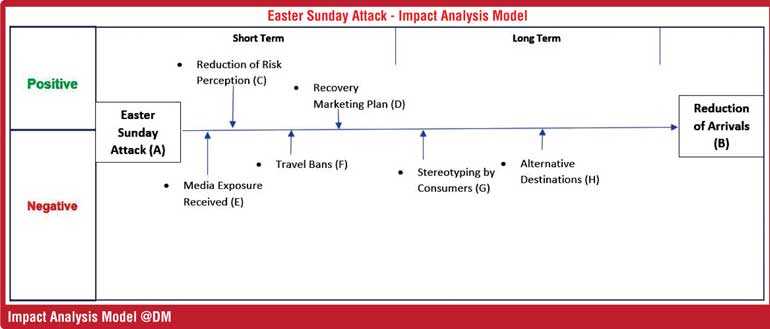




The Easter Sunday attacks in Sri Lanka have shaken the entire world, making it one of the most violent terrorist incidents in the recent past. While many discussions are going on regarding recovery plans, it is important to understand the real impact on tourism and how the industry can be revived.
 Tourism is an industry where both supply and demand can be extremely sensitive to terrorism or any kind of violent activities. Absence of terror or violence is almost a pre-condition required for the development of tourism destinations. However in the last decade the world has seen an unprecedented level of terrorist activities, including in some of the best-known tourism destinations.
Tourism is an industry where both supply and demand can be extremely sensitive to terrorism or any kind of violent activities. Absence of terror or violence is almost a pre-condition required for the development of tourism destinations. However in the last decade the world has seen an unprecedented level of terrorist activities, including in some of the best-known tourism destinations.
Overall reputation of the country and impact for tourism
There are five global reputation indexes to understand the current reputation of Sri Lanka (see table 1). While these indexes reflect the situation prior to the Easter Sunday attacks, the good news is that such incidents may not have a large impact on annual country reputation indexes.
Nation reputation is a result of values associated over a period of time based on perceptions which is defined as delayed reality. Single isolated action (good or bad) has little impact on the overall reputation. Research shows that for a country to change its current reputation requires certain constant behaviour from the country and to achieve that the country requires an unbroken chain of continuous, relevant and credible actions on ground. Countries have to earn reputation rather than trying to buy reputation via expensive promotional campaigns.
Countries with good reputations find it easier to attract tourists than those which do not have good reputations. Countries with good reputations attract more FDIs, improve their public diplomacy, increase exports, and attract foreign knowledge and talent. For example, it is easier to attract tourists to France than to Sri Lanka.
When analysing the aforesaid indexes, it is quite clear that the Sri Lanka ranking has not really moved a lot during 10 years of post-war period.

Addressing the reputation of a country is a long-term project often based on policy rather than advertising campaigns. Most countries fail to develop policies that can survive political changes and truly bring an image change. Most often political leadership is looking for quick fixes, without considering that the country reputation cannot be bought but has to be largely earned.
Impact of pre-incident reputation on post-event recovery
Almost all indexes indicate that 10 years of peaceful environment in the country helped us to enjoy an overall rank around the 60s among 210 countries in the world. However, Sri Lanka is quite far away from achieving ‘destination image’ maturity. As a result post-event image impact of the Easter attack is relatively higher than countries which have ‘image maturity’.
It is the very reason that, despite very high security concerns, cities like New York, Paris and London continue to receive tourists and are able to bounce back within four to six months. However Sri Lanka may not have that luxury due to overall image enjoyed prior to the incident. Hence while we work on short-term recovery strategies, policymakers of the country will have to design and implement a long-term national reputation building strategy which is also widely known as nation branding or place branding.
Looking at the statistics of recovery of tourism arrivals in other countries after similar incidents and yearly arrivals to Sri Lanka and terror attacks which took place from 2000 to 2010 (see tables), we can observe that 9/11 took one year to recover. Bali bombings in 2002 also took one year while Kenya took two years. Kenya had to face two major incidents in almost two consecutive years in 2013 and 2015. However Kenya recovered completely in 2018. Turkey has taken approx. 1.5 years and Egypt has shown resilience and despite a series of activities, it has recorded the highest and the best recovery strategy receiving 11.5 million tourists in 2017.
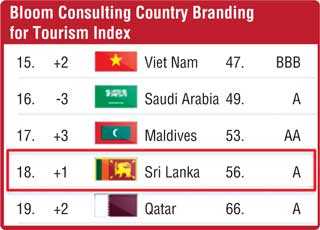
Considering all the above, it may be reasonable to assume that in the absence of any other incident, it will take 10-12 months for a complete recovery of tourist arrivals numbers to Sri Lanka. This is also can be further reinforced with the research conducted by the World Economic Forum where terrorism-based activities requires 13 months to recover.
Therefore the challenge for the industry is to reduce the recovery period and bounce back as early as possible. To do so, I recommend that policymakers should pay attention to two key factors:
1. Build on external positive factors and reduce the impact on some of the external negative factors.
2. Adopt best practices implemented by other destinations. The case of Egypt is detailed here.
Academic research in post-recovery period of destinations has established three external variables which may influence the recovery period.
However, post-recovery studies have identified a few negative external factors which will prevent early recovery, such as:
Hence, a good recovery plan should strike a balance between positive and negative variables to optimise the overall recovery time.
Case study – Egypt recovery marketing plan
According to Maire et al (2014), the main strategies used during post-disaster marketing included correcting misperceptions about the disaster and restoring confidence in a destination. Stocker (1997) has stated four activities as the first step:
We can analyse the case study based on three broad questions.
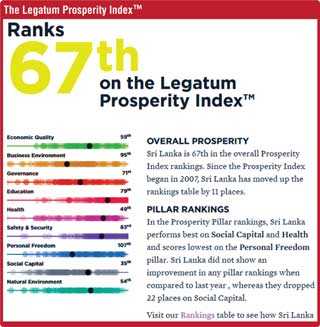
Q 1: What polices guided Egyptian officials’ relations to the media during tourism crises?
Q2: Which campaign elements (texts and visuals, for example) did tourism marketers in Egypt use in advertisements during tourism crises in that country?
Q3: What initiatives (for example culture and sporting events) did the marketers promote during crisis?
The recovery marketing strategy adopted by Egypt focused on three media strategy groups, known as SAM:
Egypt enjoyed its authority for generations as a popular destination for visitors, and tourism remains its dominant industry, accounting for 20% of its annual GDP. In 2013 revenue was $ 5.8 b from 9.5 million tourists; this was down from $ 12.5 b in 2010 from 14.5 million tourists. 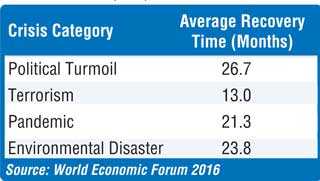
The country offers a variety of tourism activities such as history, culture, sea and sun, urban, golf, and cruise tourism. It looks like the combination of Egypt’s unique archaeological-cultural-religious sites, its desert and ecotourism opportunities, its Red Sea scuba diving attractions, and the vast triple-S sites (Sea, Sun and Sand), with low-cost tourism services transformed this country into a popular destination worldwide.
The Egyptian tourism industry has suffered from a series of crises, forcing many Western governments to impose travel warnings, steps which had a negative effect on the flow of tourists; this represented the Egyptian tourism industry’s greatest challenge. Egypt has suffered from several terror attacks since the 1990s. Some of the attacks were directed against foreign tourists in an attempt to damage the country’s vital tourism sector.
In addition to these attacks, Egypt also suffered from other crises such as the 9/11 attacks, the second Palestinian Intifada, and the war in Libya. One significant event that occurred in the Middle East recently was Arab Spring, which had immediate effects on the sharp decline in tourism.
Use of SAM in Egypt recovery plan
Source-focused strategies
The analysis shows that over the years, Egyptian marketers and officials have been cooperating with international media, attempting to influence them, trying to prevent negative coverage as well as seeking to bypass the traditional foreign media by finding alternatives ways to reach their target audiences.
Cooperation and developing media relations
The cooperation of Egyptian officials with the media was expressed by various steps, including giving interviews, organising press conferences, distributing press releases, willingness to respond to journalists’ questions, and informing them about upcoming events.
One major step in promoting cooperation with the media took the form of trips for journalists.
Marketing efforts were also directed at tour operators around the world. These operators were invited to Egypt and were also contacted in their homelands. The Egypt Tourist Office and Egyptian Tourism Authority also organised road shows in less sensitive markets including Mumbai.
Tackling travel advisories
There are three kinds of travel advisories by different countries:
Lifting the current travel ban should be the key focus for Sri Lanka at this juncture. Without getting the respective travel advisory lifted, there will be very little improvement in destination arrivals. Below-mentioned activities implemented by Egypt Tourism Authority may be useful for Sri Lanka:
Effective media releases
In 2013 Egypt ran an international public relations campaign “designed to convey what is really happening on the ground as opposed to overblown accounts provided by some media outlets”. They began to cooperate with the media giving their side of the story and facilitated to get information on actual situation using public relations firms. They also pressured some media outlets and journalist to alter reports that they believed to contain biased coverage of crisis events in their country.
Replacing traditional media and finding alternatives
As technology became increasingly developed, the hegemony of the traditional media started to crack and officials started to understand that the new technology could help them reach their target audience directly, rather than relying on the media as an intermediary.
The Egyptian Tourism Minster appeared in a YouTube video and asked foreign travel agencies to push their governments to lift their negative travel advisories for his country (they also spread information that they felt would help them get over their tourism difficulties via YouTube).
Use of webcam cameras, without the mediation of the traditional media. Such cameras broadcast continuous views from popular tourist sites over the internet. In November 2013 this strategy was developed further by launching the ‘Egypt Now’ initiative. The official Egypt Tourism website offered a channel that streams live footage, via webcams, of beaches at Sharm el Sheik and Hurghada.
The Facebook page ‘Experience Egypt’ (founded in 2010) doubled its activity at the beginning of the Arab Spring in 2011, on which tourists shared their positive experiences with travelling to Egypt and the Tourism Authority published photos of tourists visiting destinations and events.
The activity of Google Street View as a source of planning for tourists was also extended and a Twitter account was open where tourists could “start tweeting with Twitter about why you love Egypt” and get information about events.
Message strategies
Rather than looking at the source, the second group of media strategies focuses on handling the message usually put forward by the media reports which might convey the impression that “Egypt is not safe”.
Ignoring the crisis and conveying the message of “business as usual”
The “ignoring the crisis” strategy provides a solution in which destination marketers behave as if there has been no crisis or that no damage has been caused. Egypt, for example, displayed total disregard for the series of attacks by terrorists in a number of Egyptian cities in the first half decade of the 2000.
Officials in Egypt also made use of the strategy referred to as “mitigating, limiting and reducing the crisis”. This involves minimising the geographical borders of the crisis, its severity and the intention to harm tourists. This strategy was carried out using three techniques:
Hosting spotlight sports and cultural events “spotlight events”
Signature destination events were proven to be the quickest way of building traveller confidence. Music concerts, festivals, and other forms of entertainment provided much needed destination endorsements coupled with celebrity marketing.
According to Avraham and Ketter (2008), “focus the media’s attention on a particular location for a short, concentrated period, allowing the host place to promote certain chosen images that can be used to improve an unsafe image, create positive news, and shift international media attention from a negative to a positive portrayal of the place.”
Several international conferences, concerts, sports competitions and folk music events were subsequently held there. Earlier, the first International Festival for Drums and Traditional Arts was held in April 2013 in Cairo.
Al-Hamarneh (2013) claimed that Egypt during the Arab Spring developed two new kinds of tourism, such as solidarity and adventure tourism, that could similarly be considered “turning the negative into positive”.
Association with well-known brands and celebrities
Many destinations, as mentioned, suffer from an image problem based on stereotypes and generalisations built up over many years. Overcoming such an image can be difficult as people do not quickly put aside their preconceptions. Inviting and associating with the destination with such celebrities will provide much-needed credibility.
Target audience-focused strategies
The common denominator of the target audience-focused strategies to improve a destination’s image is the attempt to reach a specific target audience directly using several strategies.
Emphasis on similarities, resemblances and relevance to specific audiences: In this strategy, Egypt marketers attempt to form a connection between their country’s values, history, culture or ideology to a particular target audience believed to be especially receptive.
Manheim and Albritton (1984), for example, wrote about public relations firms in the US that promoted countries in the developing world for local audiences by trying to connect them with the values of human rights and democracy, which the PR experts knew, Americans tend to hold in high esteem.
Egyptian marketers tried hard to address potential tourists from Gulf States: In May 2014, for example, Egypt’s Ministry of Tourism launched a campaign titled ‘We miss you’ to attract visitors from the Gulf States. During 2014, Egypt also launched the ‘Masr Qareeba’ (‘Egypt is near’) campaign to the same audience Since then, as the crisis continued, regional tourism accounted for 20% of the total of incoming visitors to Egypt.
Developing and marketing new niches and target audiences: While the former strategy focuses on certain target audiences, this strategy also includes a search for new target audiences, but is based more on finding new niches. In this strategy, the marketers invest efforts in promoting and developing new niches, such as golf, rural or extreme tourism, markets that were neglected in the past.
According to the Christian Bible, the Virgin Mary and Jesus stayed in Egypt for 42 months, visiting 20 different places. As a result, the Egyptian Ministry of Tourism developed a program that would allow pilgrims to follow the journey of the Holy Family.
In addition to religious tourism, Egyptian marketers also started to develop and improve the promotion of other kinds of tourism such as green/eco-tourism, diving tourism and MICE.
Furthermore, in order to increase the numbers of tourists in 2013 and 2014, instead of promoting the country as a whole, Egypt started to promote a variety of sub-brands, including ‘The Romantic Nile’ and ‘The Land of the Pharaohs’. The campaign was designed according to the marketers in order to promote Egypt’s culture so that it would not be seen as merely a beach destination.
It is important to mention that Egypt marketers have used other steps and techniques, beside the three kinds of strategies. Some of them related to the media/marketing aspects, other to changes in the brand itself. These steps and techniques included
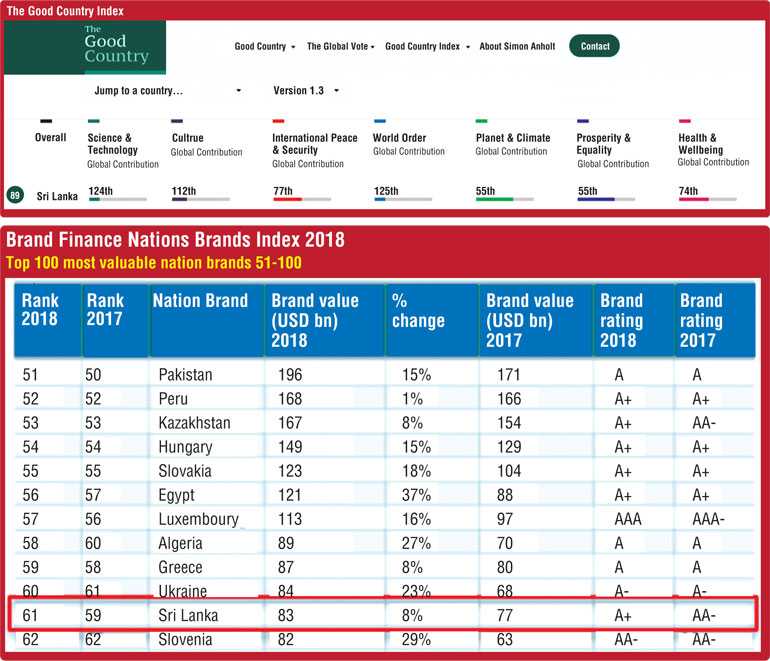
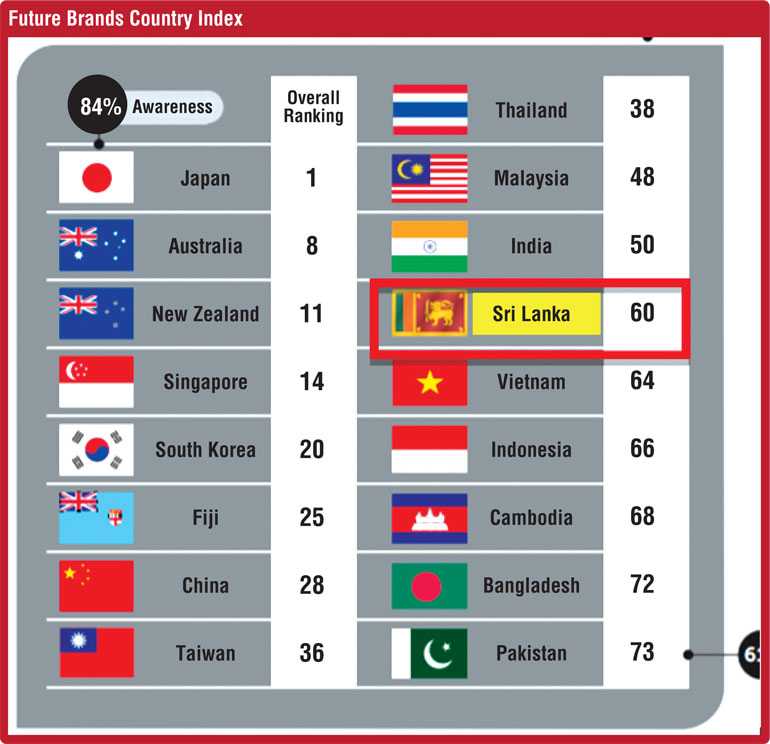
Conclusion
Every crisis is unique and so is its marketing recovery plan, however taking a closer look at the tested and proven activities by other countries will not only save money for expensive PR campaigns but will also bring quick results.
Most countries which cannot recover fast suffer from lack of marketing budgets, difficulty in changing the actual problem, inability to influence the international media, not having experienced people to handle such a program and lack the right governance/structure to implement a complete recovery program.
It is recommended for Sri Lanka to adopt a dual strategy. One is to have a separate focused action plan to change the current level of travel advisories along with a financial relief package for the industry. On the other hand to plan and execute the medium-term to long-term PR-led communication action plan.
It is important to focus on PR-led communication such as celebrity marketing and demand stimulation among the domestic travellers, working with diaspora for campaigns like ‘bring a friend home’.
(The writer is a Member of the Tourism Task Force and Founder of the Centre for Research and Tourism Studies.)